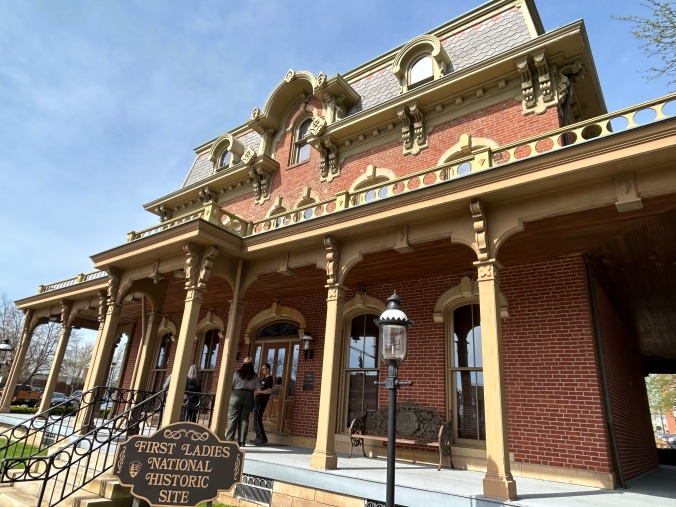
For some reason, the volunteers giving the tour did not appreciate my ‘Dad joke’ references to the cat from the comics (no relation). James Garfield was a veteran of Shiloh and Chickamauga and an effective General. He was also a large man, a skilled orator and quite intelligent, devising mathematical proofs, etc. At the 1880 Republican Convention, Garfield went to support John Sherman, of the Sherman Antitrust Act, but Sherman couldn’t win the nomination. After over 30 failed ballots, someone proposed Garfield, and he became the nominee. Garfield built a path from the railroad line at the back of his Ohio property to his front porch and invited all comers to hear him speak. This new ‘front porch’ campaign was a hit, and he won.
After only a few months in office, Garfield was fatally shot in the back by a failed applicant for a Civil Service job. It took months for him to die, and a rich friend raised a considerable amount of money to take care of his widow. So, the most significant policy which arose from his brief administration was to reform the Civil Service process, so that the President wouldn’t have to meet anyone who wanted a job and hand them out (often corruptly). They also granted pensions to the widows Garfield and Lincoln.
Garfield’s widow, now rich, added 20 rooms or so to her house and built a private Presidential Library upstairs, a first. The house is mostly filled with authentic items and is remarkably well restored. The room above is the best lit and shows the finery. The library no longer contains Garfield’s papers, but it contains many books, prints and busts of authors, and Garfield’s congressional desk. Based on his Congressional career, one could argue that Garfield would have been a good President, supporting African American suffrage, voting for Johnson’s impeachment, etc., but it’s neither clear nor a flawless record. We’ll never really know.
“I’m feeling down.
Garfield
Down, down, down.
Down, dooby down-down.”





